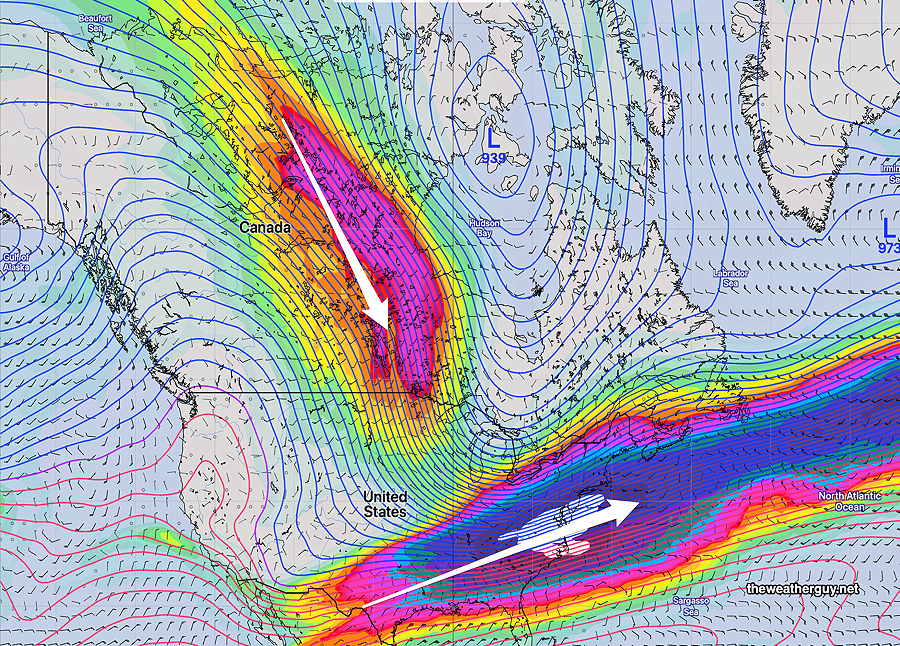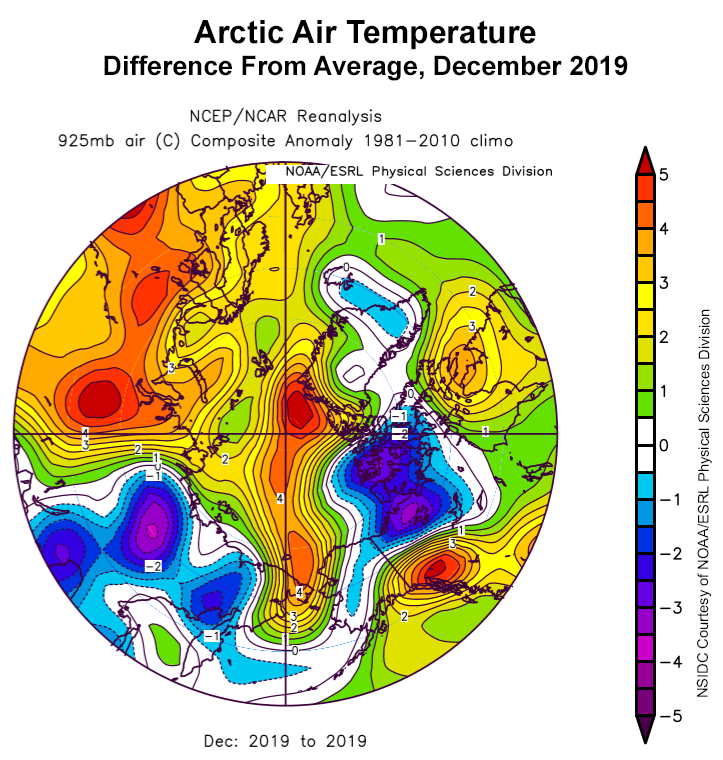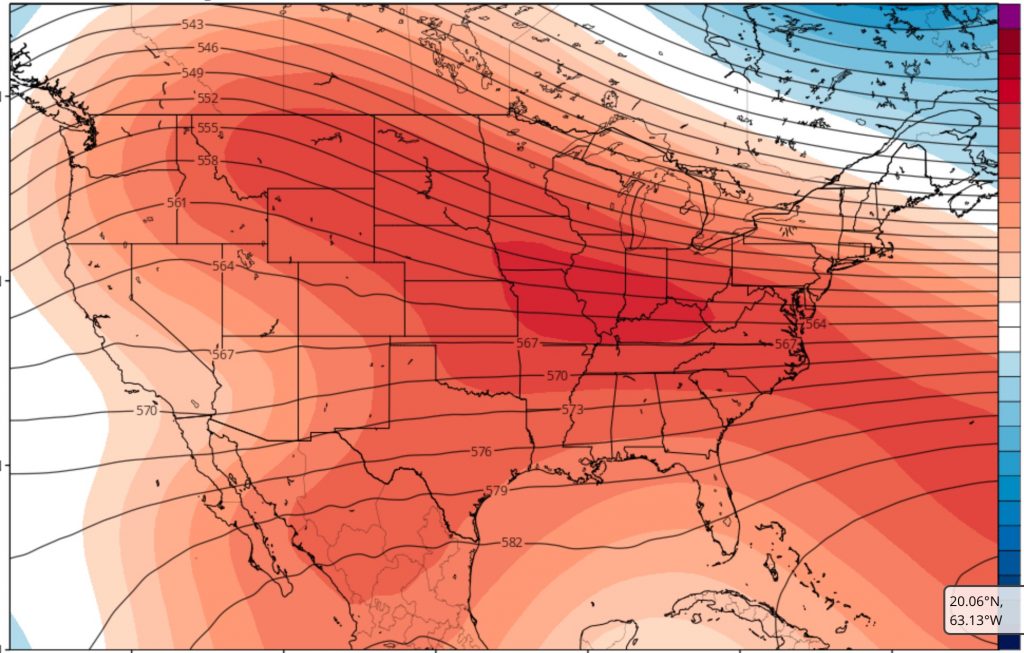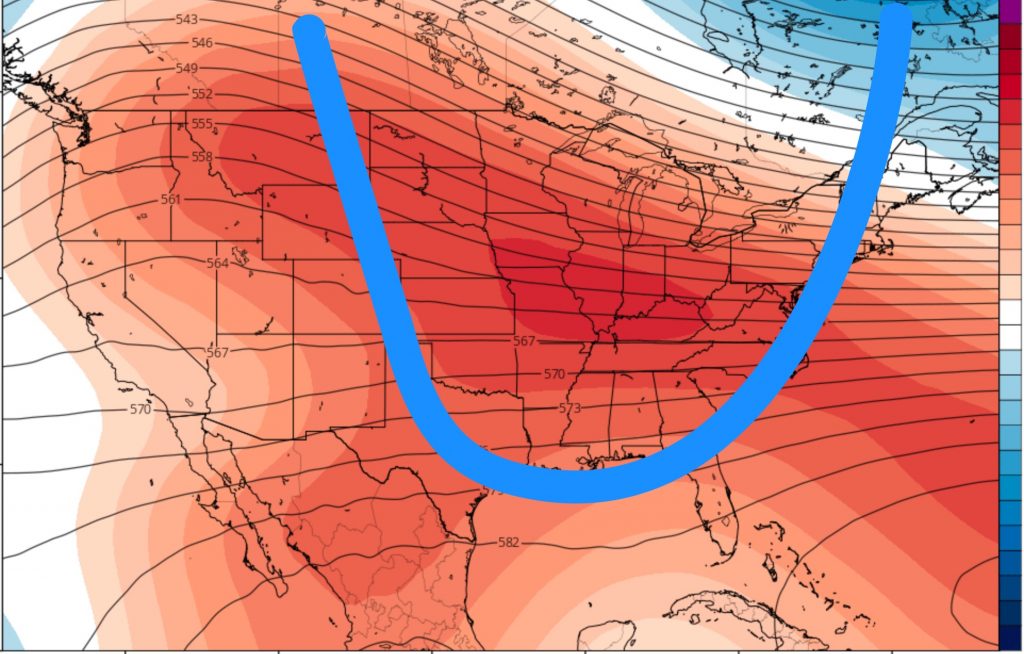I’m often asked around this time of year whether we’ll get a lot of snow in the coming winter. My response over the past two to three winters has been that I don’t see any pattern evolving that would give us a greater likelihood for large snowfalls.
All I would say is that large temperature swings would be something to expect. The last three winters have been light on large snowfalls with large swings in temperatures every few weeks.
The large swings in temperature are likely to continue this winter.
In years where I see a pattern evolving, I usually wait until the first week of December to make the call. But this year, I’m chiming in early.
Let me cut to the chase— The jet pattern I’ve seen develop over the past month hasn’t been seen in several past winters. If it continues, it translates into more frequent coastal storm development with higher snowfall amounts this winter for our area.
The jet stream pattern forecast for this weekend captures the setup—

Climate forecasts are tough and even the experts at the NWS Climate Center have not always done well. Climate forecasts and weather forecasts, while they may appear on the surface to somewhat similar, are very different sciences. Climatologists even have their own models.
I’m more knowledgeable about weather compared to climate, but I’ve been looking at the maps these past few weeks and I wanted to share what I see in them a bit earlier in the season than usual.
While I’m at it, we need to keep an eye on Thanksgiving weekend, especially next Friday night into Saturday. Our first taste of either light snow or a mix is possible.



